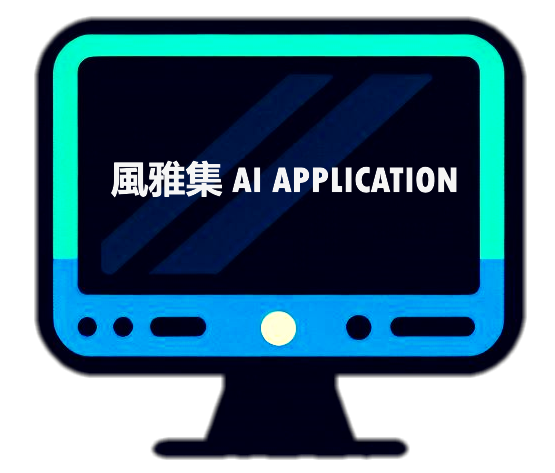2025年5月13日, 老實說,我不知道我應該如何教育我的孩子。 A.I.給學校提出了很多問題。 教師不得不適應有史以來最巧妙的作弊技術。 但對我來說,更深層次的問題是:學校到底應該教什麼? A.I.將使未來看起來非常不同。 你如何讓孩子們為一個你無法預測的世界做好準備?
如果我們能把越來越多的任務卸到生成的人工智慧上,人類的頭腦還剩下什麼呢?
Rebecca Winthrop是布魯金斯學會普世教育中心的主任。 她還與珍妮·安德森一起撰寫了《不參與的青少年:幫助孩子們更好地學習、感覺更好、生活得更好》。 我們討論了人工智慧如何改變工作和接受教育的意義,以及我們如何利用人工智慧來振興或破壞美國學校。
I honestly don’t know how I should be educating my kids. A.I. has raised a lot of questions for schools. Teachers have had to adapt to the most ingenious cheating technology ever devised. But for me, the deeper question is: What should schools be teaching at all? A.I. is going to make the future look very different. How do you prepare kids for a world you can’t predict?
And if we can offload more and more tasks to generative A.I., what’s left for the human mind to do?
Rebecca Winthrop is the director of the Center for Universal Education at the Brookings Institution. She is also an author, with Jenny Anderson, of “The Disengaged Teen: Helping Kids Learn Better, Feel Better, and Live Better.” We discuss how A.I. is transforming what it means to work and be educated, and how our use of A.I. could revive — or undermine — American schools.
DeepSeek gives the following comprehensive summary of this YouTube transcripts:
《人工智慧時代下的兒童教育》綜合摘要
《Ezra Klein 秀》與 Rebecca Winthrop 對談
1. 引言:閱讀能力下降與人工智慧的崛起
閱讀習慣的統計數據:1976 年,40% 的高中畢業生會為興趣閱讀 6 本以上書籍;如今,40% 的學生一本也不讀。考試成績和智力參與度下降,疫情加劇了這一趨勢。
AI 的顛覆性角色:生成式 AI(如 ChatGPT)能總結書籍、撰寫論文、解數學題,引發對傳統教育目的的質疑。家長如 Ezra Klein 擔憂如何讓孩子為不可預測的未來經濟做好準備。
2. 重新思考教育的目的
Rebecca Winthrop(布魯金斯學會全球教育中心主任)主張,因應 AI 衝擊,教育須轉變重心:
三個核心問題:
為何教育? 除職業準備外,教育應培養批判性思維、創造力和適應力。
孩子如何學習? 參與度和動機是成功的關鍵預測指標。
應學習什麼? 內容需平衡基礎知識(如辨別真假資訊)和「軟技能」(合作、自我調節)。
以人為本的目標:教育應優先培養人際互動、倫理判斷和應對不確定性的能力。
3. 學生的參與模式
Winthrop 提出四種學生參與模式:
乘客模式:學生敷衍了事,只做最低限度(如用 AI 快速完成作業)。
成就者模式:追求完美結果(成績),但缺乏深度學習。
抗拒者模式:表現為不參與或破壞行為。
探索者模式:內在驅動、主動學習的學生。
解決方案:學校需個性化教學以激發好奇心(例如讓學生設計以林肯/甘迺迪遇刺為主題的密室逃脫專案)。
4. AI 在教育中的風險與機遇
風險:
過度依賴 AI 會消除大腦發展所需的「認知摩擦」(如批判性思維、專注力)。
擴大教育不平等:富裕學生能接觸更好的 AI 工具,其他學生面臨禁用或技術不足。
機遇:
針對性支持:AI 導師可協助神經多樣性學生或資源匱乏地區(例如奈及利亞研究顯示,AI 在 6 週內使英語能力提升 3 個標準差)。
教師輔助:AI 可處理行政任務(評分、排課),讓教師專注於指導。
5. 公平與倫理問題
數位落差:私立學校更快適應 AI,公立學校落後。農村/全球社區缺乏寬頻或 AI 素養。
需加強監管:商用 AI 工具(如 ChatGPT)非為兒童設計。Winthrop 主張成立「公益企業」,優先考慮兒童福祉而非利潤。
螢幕使用教訓:過去失敗(如課堂過度使用平板)凸顯謹慎的必要性。
6. 給家長與教育者的建議
給學校:
上課期間禁用手機以保護專注力。
融入 AI 素養教育(倫理、風險),不過度依賴 AI 教學。
優先人際互動(如辯論、協作專案)。
給家長:
超越成績,評估孩子的主動性、好奇心和參與度。
培養「口語能力」(聆聽/表達)與傳統讀寫能力並重。
7. 未來願景
平衡之道:學校應成為「無螢幕綠洲」,培養深度閱讀、反思與人際連結。AI 應輔助而非取代教師。
長期技能:聚焦適應力、創造力與倫理判斷,為 AI 驅動的經濟做好準備。
8. Rebecca Winthrop 推薦書單
《民主與教育》(約翰・杜威):反思在學習中的角色,以及學校的社會意義。
《斷線》(Gia Bernstein):對抗成癮科技的策略。
《革命藍圖》(Srdja Popovic):現代非暴力行動與社群建構。
結論:本集節目強調教育亟需重新想像,在 AI 潛力與人際連結、批判性思維的不可替代價值間取得平衡。
Comprehensive Summary of “Educating Kids in the Age of A.I.”
The Ezra Klein Show with Rebecca Winthrop
1. Introduction: Declining Literacy and the Rise of AI
Statistics on Reading Habits: In 1976, 40% of high school seniors read 6+ books for fun; today, 40% read none. Test scores and intellectual engagement have declined, exacerbated by the pandemic.
AI’s Disruptive Role: Generative AI (e.g., ChatGPT) can summarize books, write essays, and solve math problems, raising questions about the purpose of traditional education. Parents like Ezra Klein worry about preparing children for an unpredictable future economy.
2. Rethinking the Purpose of Education
Rebecca Winthrop (Director, Center for Universal Education) argues education must shift focus due to AI:
Three Core Questions:
Why Educate? Beyond job preparation, education should foster critical thinking, creativity, and adaptability.
How Do Kids Learn? Engagement and motivation are key predictors of success.
What Should They Learn? Content must balance foundational knowledge (e.g., discerning real vs. fake information) and “soft skills” (collaboration, self-regulation).
Human-Centric Goals: Education should prioritize human interaction, ethical reasoning, and the ability to navigate uncertainty.
3. Modes of Student Engagement
Winthrop identifies four engagement modes observed in students:
Passenger Mode: Students coast, doing the bare minimum (e.g., using AI to shortcut assignments).
Achiever Mode: Focused on perfect outcomes (grades) without deep learning.
Resistor Mode: Disengaged or disruptive behavior.
Explorer Mode: Intrinsically motivated, proactive learners.
Solutions: Schools must personalize learning to spark curiosity (e.g., project-based learning, like a student designing an Abraham Lincoln/JFK assassination-themed escape room).
4. AI’s Role in Education: Risks and Opportunities
Risks:
Over-reliance on AI erases “cognitive friction” needed for brain development (e.g., critical thinking, attention spans).
Widens equity gaps: Wealthier students access better AI tools, while others face bans or inadequate tech.
Opportunities:
Targeted Support: AI tutors can assist neurodivergent students or those in under-resourced regions (e.g., a Nigerian study showed AI improved English skills by 3 standard deviations in 6 weeks).
Teacher Support: AI could handle administrative tasks (grading, scheduling), freeing educators to focus on mentorship.
5. Equity and Ethical Concerns
Access Divide: Private schools adapt faster to AI, while public schools lag. Rural/global communities lack broadband or AI literacy.
Regulation Needed: Commercial AI tools (e.g., ChatGPT) are not designed for children. Winthrop advocates for “benefit corporations” prioritizing child well-being over profit.
Screen Time Lessons: Past failures (e.g., excessive tablet use in classrooms) highlight the need for caution.
6. Recommendations for Parents and Educators
For Schools:
Ban phones during school hours to protect attention spans.
Integrate AI literacy (ethics, risks) without overusing AI for instruction.
Prioritize human interaction (e.g., debates, collaborative projects).
For Parents:
Look beyond grades to assess agency, curiosity, and engagement.
Encourage “oracy skills” (listening/speaking) alongside traditional literacy.
7. Vision for the Future
Balanced Approach: Schools should be “screen-free oases” fostering deep reading, reflection, and human connection. AI should augment—not replace—teachers.
Long-Term Skills: Focus on adaptability, creativity, and ethical judgment to prepare students for AI-driven economies.
8. Rebecca Winthrop’s Book Recommendations
Democracy and Education (John Dewey): The role of reflection in learning and schools’ societal purpose.
Unwired (Gia Bernstein): Strategies to resist addictive tech.
Blueprint for Revolution (Srdja Popovic): Modern nonviolent activism and community-building.
Conclusion: The episode underscores the urgency of reimagining education to balance AI’s potential with the irreplaceable value of human connection and critical thinking.
DeepSeek rewrites the above message for social media post, make it more interesting and encouraging. Use Traditional Chinese.
🔥 【人工智慧時代,如何讓孩子贏在未來?】
教育專家 Rebecca Winthrop 獨家分享!
📚 驚人數據:40年前,40%高中生為興趣讀6+本書;如今,40%一本不讀!
🤖 AI衝擊來襲:ChatGPT能30秒讀完一本書、代寫論文… 傳統教育還夠用嗎?
💡 教育大翻轉!3大關鍵思維
1️⃣ 為什麼學? → 別只為「找工作」!培養「解決未知問題」的創造力與韌性!
2️⃣ 怎麼學? → 動機是王道!「探索者模式」學生比「成就者」更可能成功!
3️⃣ 學什麼? → 辨別真假資訊 + 團隊合作,比背公式更重要!
🚀 AI是敵是友?聰明使用指南
✅ 神隊友用法:
輔助特殊需求學生,6週英文進步3倍!✨
解放老師時間:自動改作業,專注心靈導師角色
❌ 豬隊友風險:認知力退化!「用AI寫作業」= 大腦肌肉萎縮💔
貧富差距擴大!你的學校還在「AI石器時代」?
🎯 家長必看!未來教育checklist
🔹 別問「考幾分?」改問「今天發現什麼有趣問題?」
🔹 每天1小時「無螢幕時間」:練口語表達比滑手機重要!
🔹 支持學校「手機禁令」:專注力是最強超能力!
🌍 全球教育新趨勢
荷蘭實驗室:老師+工程師聯手設計「教育專用AI」
最酷作業:設計「林肯遇刺密室逃脫」學歷史!
未來人才關鍵詞:人性溫度 ✖ 科技敏銳度
📖 教育書單彩蛋
1️⃣ 《民主與教育》百年經典解密:為何「反思」比死記更重要?
2️⃣ 《斷線運動》:對抗演算法綁架的全家行動指南!
✨ 現在就行動:分享你的「AI時代育兒妙招」,留言抽教育顧問諮詢!
#未來教育 #AI父母生存指南 #別讓孩子輸給機器
👉 追蹤 @教育新視野 ,每周破解教育迷思!
改變,從一個轉發開始! 🌟
DeepSeek描寫出插畫提示詞 (Prompt) & ChatPT 畫出影象
“充滿未來感的教室場景,前景左側是多樣化的學生群體(不同族裔)圍坐討論,中間有老師手持發光書本站立,書本封面顯示’AI+教育’字樣。背景右側浮現半透明AI機器人形象,手持放大鏡分析數據流,左側背景是學生用AR眼鏡在虛擬歷史場景中互動(如林肯遇刺密室逃脫)。畫面下方有禁止手機符號與書籍堆疊,上方漂浮對話框顯示’創造力’『韌性』等關鍵詞。整體採用明亮科技藍為主色調,搭配活力橙色點綴,卡通渲染風格帶輕微賽博朋克元素,強調人與科技的和諧共處。”
關鍵元素解析:
- 主體互動:師生討論組體現人際連結
- AI象徵:半透明機器人代表輔助而非主導
- 創新學習:AR歷史場景呼應密室逃脫案例
- 衝突隱喻:禁止手機圖標與傳統書籍的並置
- 色彩心理學:科技藍(理性)x 活力橙(創造力)


